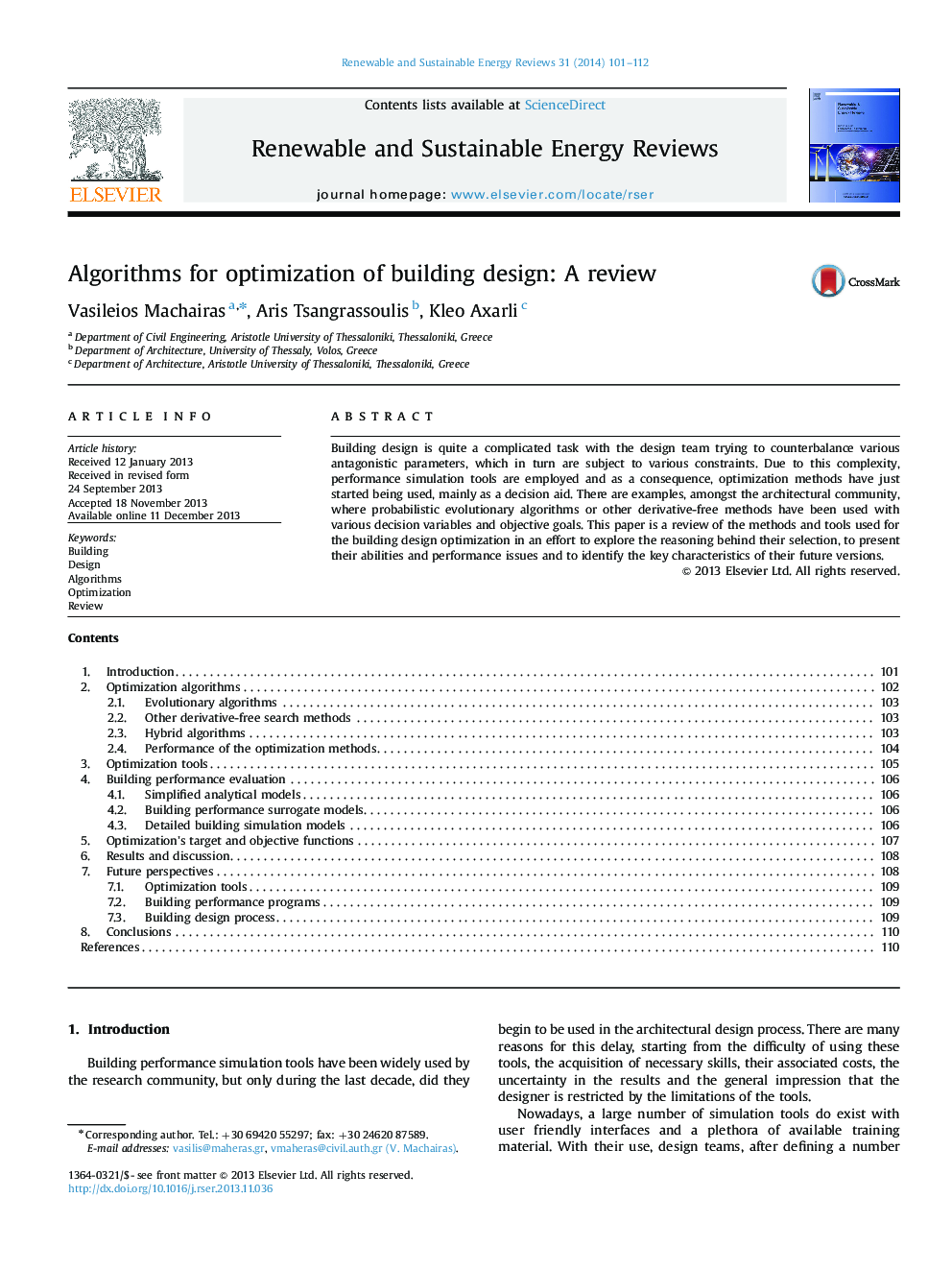| Article ID | Journal | Published Year | Pages | File Type |
|---|---|---|---|---|
| 8120169 | Renewable and Sustainable Energy Reviews | 2014 | 12 Pages |
Abstract
Building design is quite a complicated task with the design team trying to counterbalance various antagonistic parameters, which in turn are subject to various constraints. Due to this complexity, performance simulation tools are employed and as a consequence, optimization methods have just started being used, mainly as a decision aid. There are examples, amongst the architectural community, where probabilistic evolutionary algorithms or other derivative-free methods have been used with various decision variables and objective goals. This paper is a review of the methods and tools used for the building design optimization in an effort to explore the reasoning behind their selection, to present their abilities and performance issues and to identify the key characteristics of their future versions.
Related Topics
Physical Sciences and Engineering
Energy
Renewable Energy, Sustainability and the Environment
Authors
Vasileios Machairas, Aris Tsangrassoulis, Kleo Axarli,
